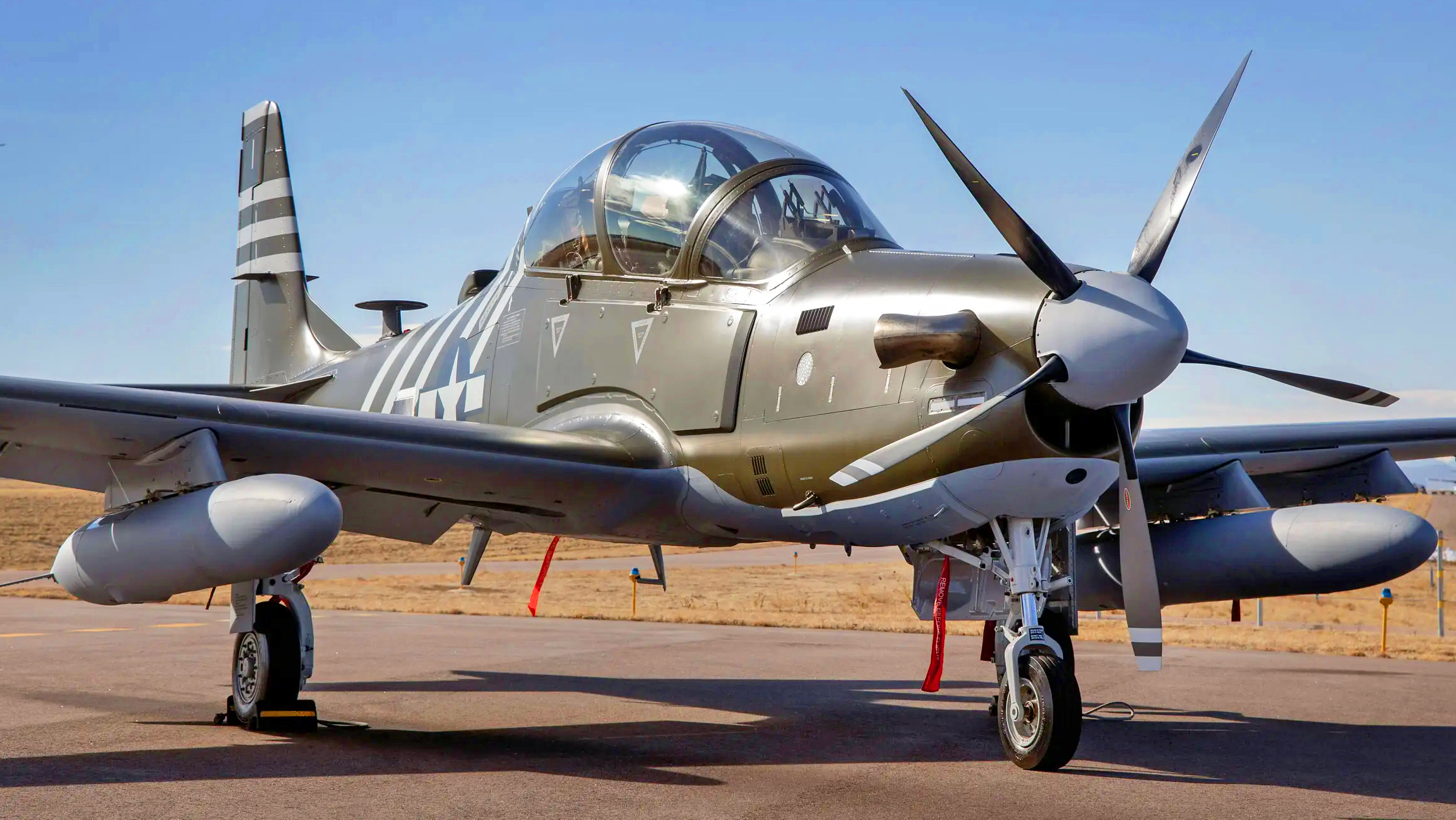The saga of the U.S. Air Force’s Light Attack Experiment could be finally nearing its end, with the service now apparently looking to offload the tiny force of turboprop aircraft it acquired over the last couple of years. The three A-29 Super Tucanos and two AT-6E Wolverines will likely be passed on to foreign operators if the Air Force gets its way.
The latest development in the ever-complicated Light Attack Experiment was addressed by Edward Stanhouse, the Air Force’s Program Executive Officer for Intelligence, Surveillance, and Reconnaissance (ISR) and Special Operations Forces (SOF), speaking to journalists at this week’s Life Cycle Industry Days conference.
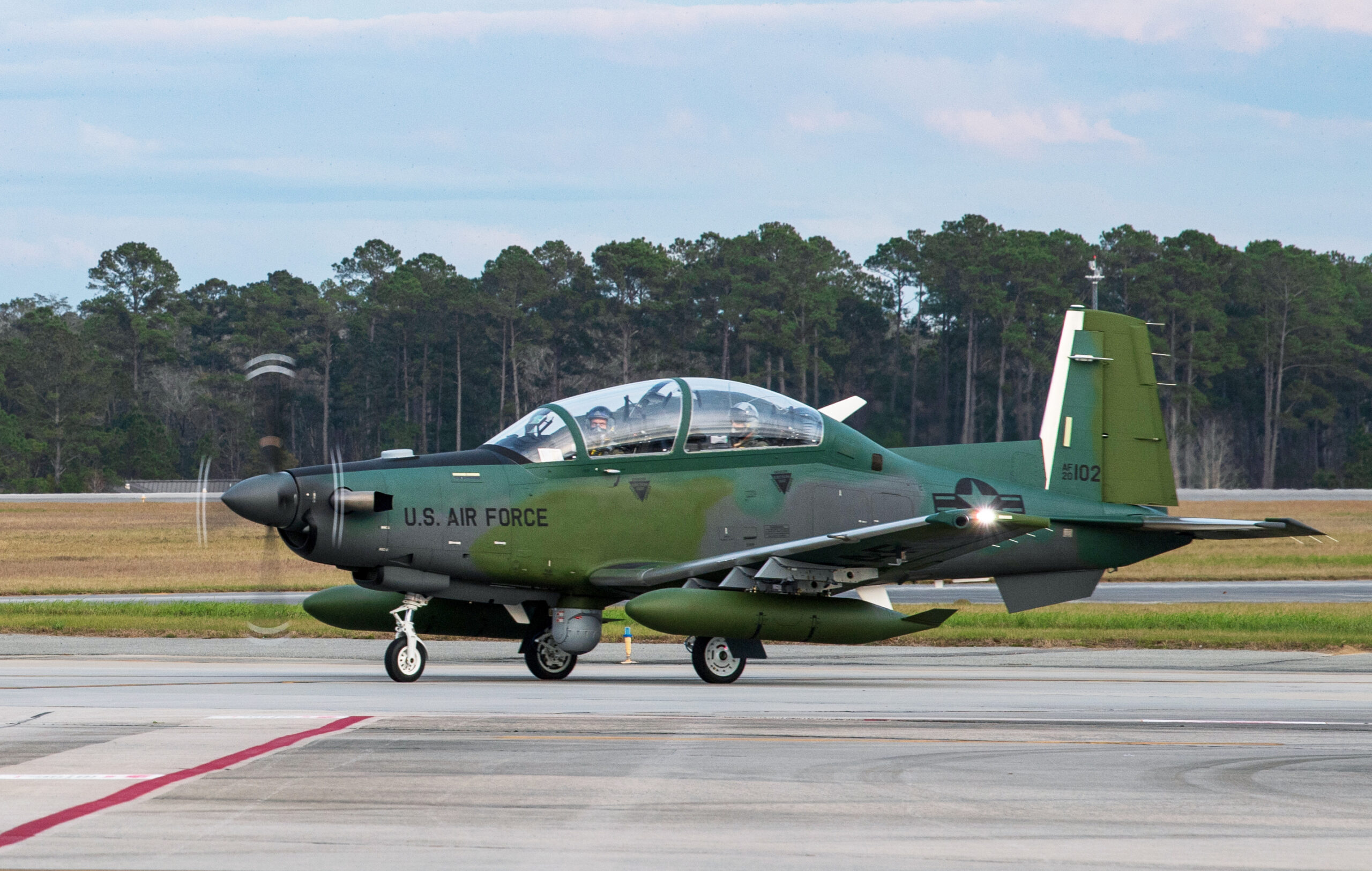
The Air Force Special Operations Command (SOCOM) A-29s and Air Combat Command’s AT-6Es “will end up being probably declared Excess Defense Articles, and we’ll look for other mission partners that may want to pick those up,” Stanhouse said, according to Air Force Magazine.
Excess Defense Articles are military materiel that can be provided to partner nations either at a reduced cost or as a grant and are frequently transferred to aid foreign governments in their modernization plans. Partner nations pay for transport and delivery of the assets, as well as refurbishment, if applicable.
At this point, it’s worth noting that such a move, even if the Air Force backs it, may still be blocked by Congress.
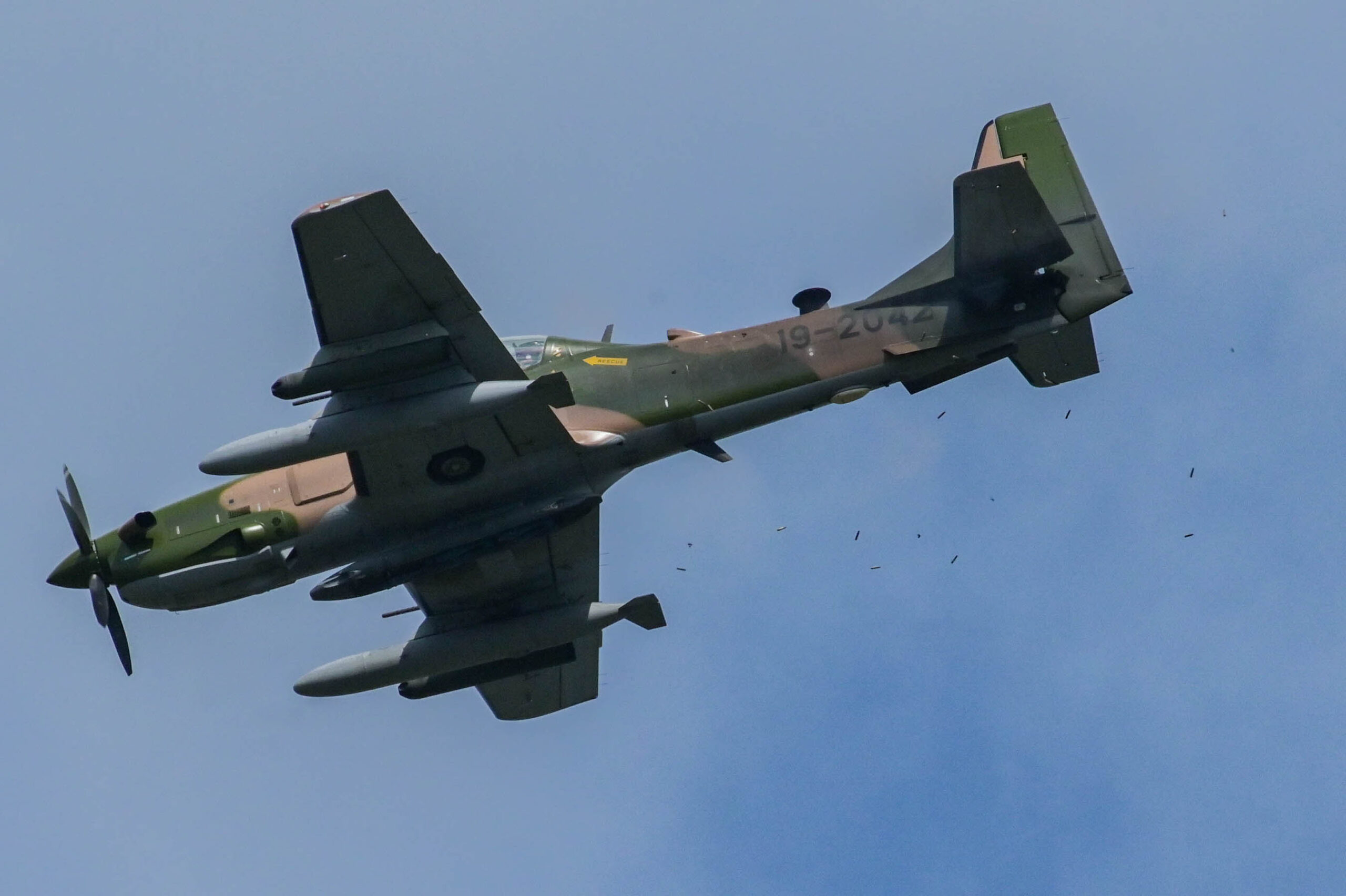
The Air Force may also choose to sell off the second-hand aircraft under the Foreign Military Sales, or FMS, process, which is what Stanhouse, at least, seems to have in mind.
“I think the probability is potentially FMS, because we currently have FMS partners who are flying both the AT-6 and A-29,” Stanhouse said, noting that he thinks “there’s quite a bit of foreign interest.” In fact, no FMS partners currently fly the AT-6E as used by Air Combat Command, but the T-6 Texan II trainer from which it was derived is in widespread use.
In total, the Pentagon spent more than $200 million on buying the five aircraft.

At this point, we don’t have a timeline for the planned withdrawal of the Air Force’s A-29s and AT-6Es, although it may well be significant that Stanhouse is already talking about them in the past tense:
“They were used for demonstrations, proof of concept demonstrations by both SOCOM and Air Combat Command,” he said.
Among those demonstrations was the Airborne Extensible Relay Over-Horizon Network, or AERONet, described as “a low-cost, exportable datalink solution for countries that don’t have access to U.S. systems.” In June this year, the Air Force revealed some details of those trials, which involved pilots from Colombia, Nigeria, Thailand, and Tunisia flying in the back seat of the AT-6E to test these technologies. At the same time, the Air Force announced the departure of partner nation personnel and the two AT-6Es to bring to an end a five-month-long collaboration.

Whether or not there exists a requirement for future AERONet testing is less important, since this is a ‘platform agnostic’ system, meaning there’s no particular need for a niche aircraft (the AT-6E) to support the project should it resume. The Wolverine was also lined up to take part in other experiments with the U.S. Marine Corps and other partner countries, again with a focus on common architecture and intelligence-sharing networks, but the status of these trials is less clear.
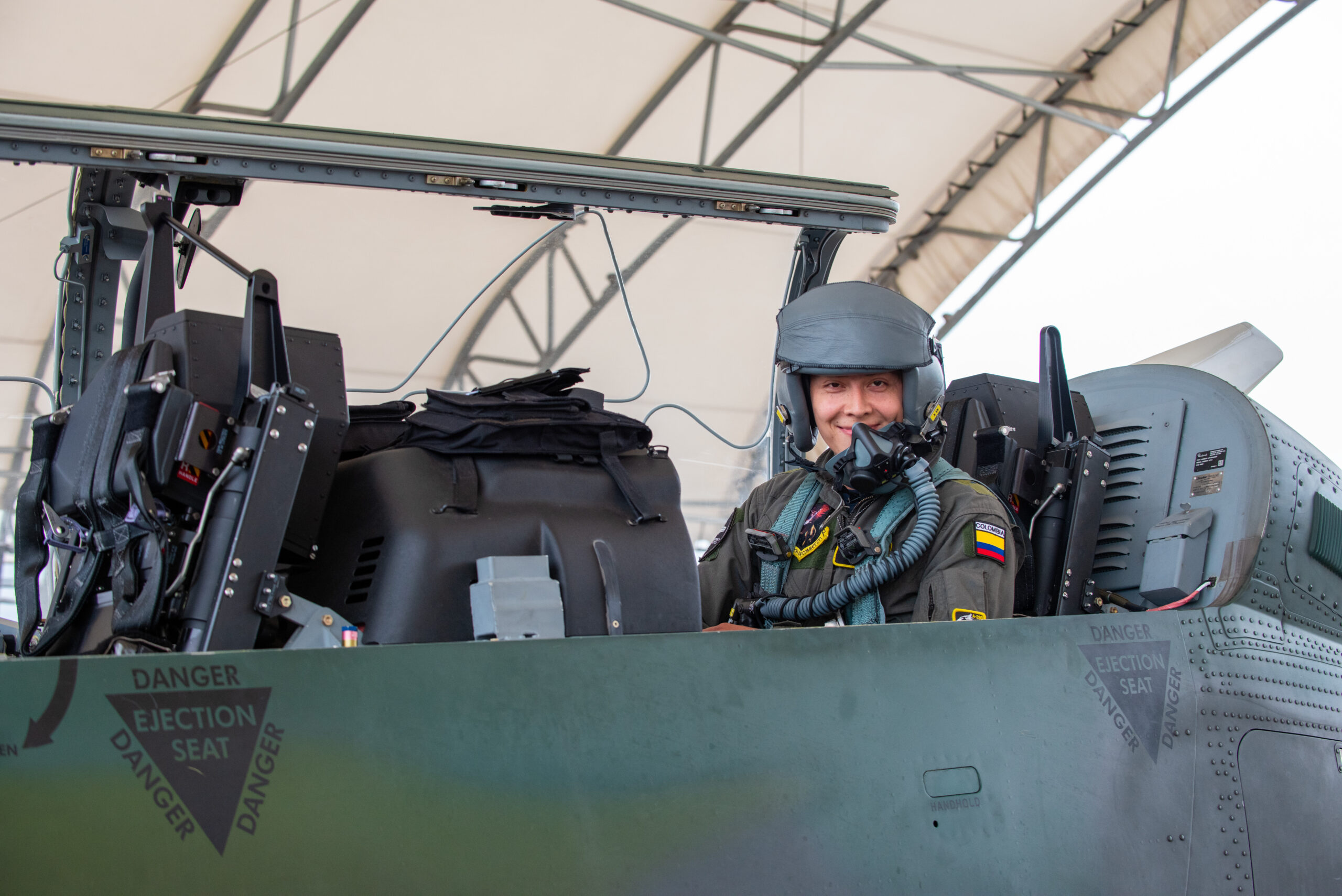
Meanwhile, the Super Tucano was acquired to support AFSOC’s Combat Aviation Advisor (CAA) mission. This involved helping train CAAs, U.S. personnel who then pass on their expertise by training allied air forces.
With senior officials already talking about plans to get rid of the five-aircraft Light Attack Experiment fleet, it certainly looks like the program is close to being wound up. In the past, Sierra Nevada Corporation, the prime contractor for the A-29, has said it expects to provide training and support for these aircraft continuing through 2024.
According to A-29’s manufacturer, 15 air forces around the world have selected the type, which remains a popular choice for light attack and ISR missions in Africa, Asia, and Latin America. CAAs work with many other aircraft types too, so it may have been determined that operating a tiny fleet of A-29s just to support this mission doesn’t make long-term sense.
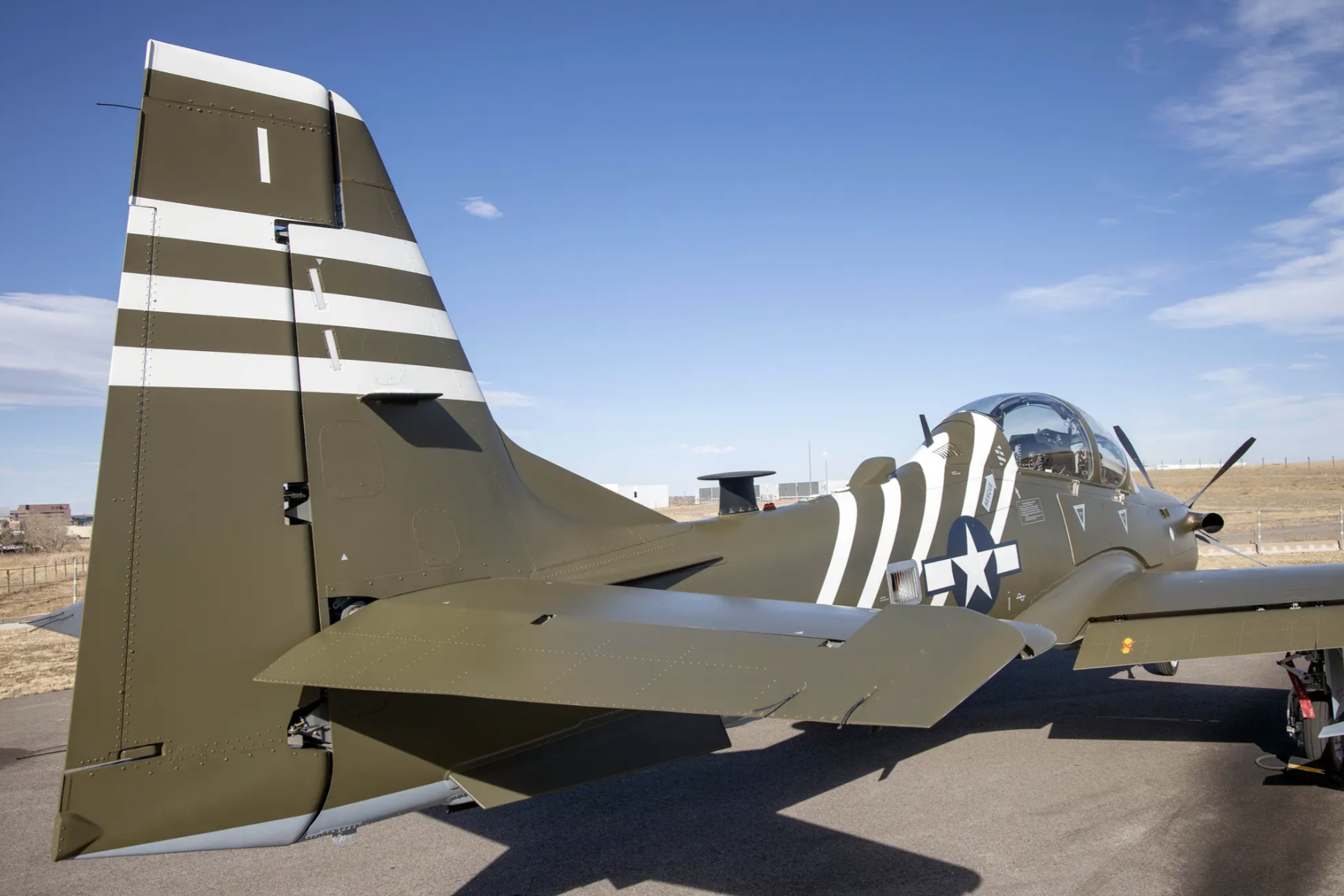
Even if the aircraft remain in Air Force use until 2024, that will make it a notably short-lived initiative, at least in terms of time since aircraft delivery. The first AT-6E was handed over in February 2021 and the first A-29 for Air Combat Command arrived the following month. The last of the A-29s, ordered under a follow-on contract, was delivered in March this year.
However, the Light Attack Experiment’s predecessors, date back many more years, during which they repeatedly failed to actually put aircraft in the hands of Air Force operators.
Beginning in 2007, different branches of the U.S. military began evaluations involving either the A-29 or the AT-6, or both, in the light attack role, on six different occasions since 2007.
Between 2008 and 2012, the Air Force juggled two separate light attack aircraft efforts, one for itself and one primarily on behalf of foreign partners, known as Light Attack/Armed Reconnaissance (LAAR) and Light Air Support (LAS) respectively.

The LAAR program collapsed ignominiously in 2012, as you can read about here, although LAS did see the A-29 selected and then provided to Afghanistan. The aircraft did also enter service with Air Education and Training Command (AETC), whose 81st Fighter Squadron was reactivated to fly these same aircraft to train Afghan and later also Lebanese and Nigerian pilots. The squadron graduated its final class at Moody Air Force Base, Georgia, in September 2021.
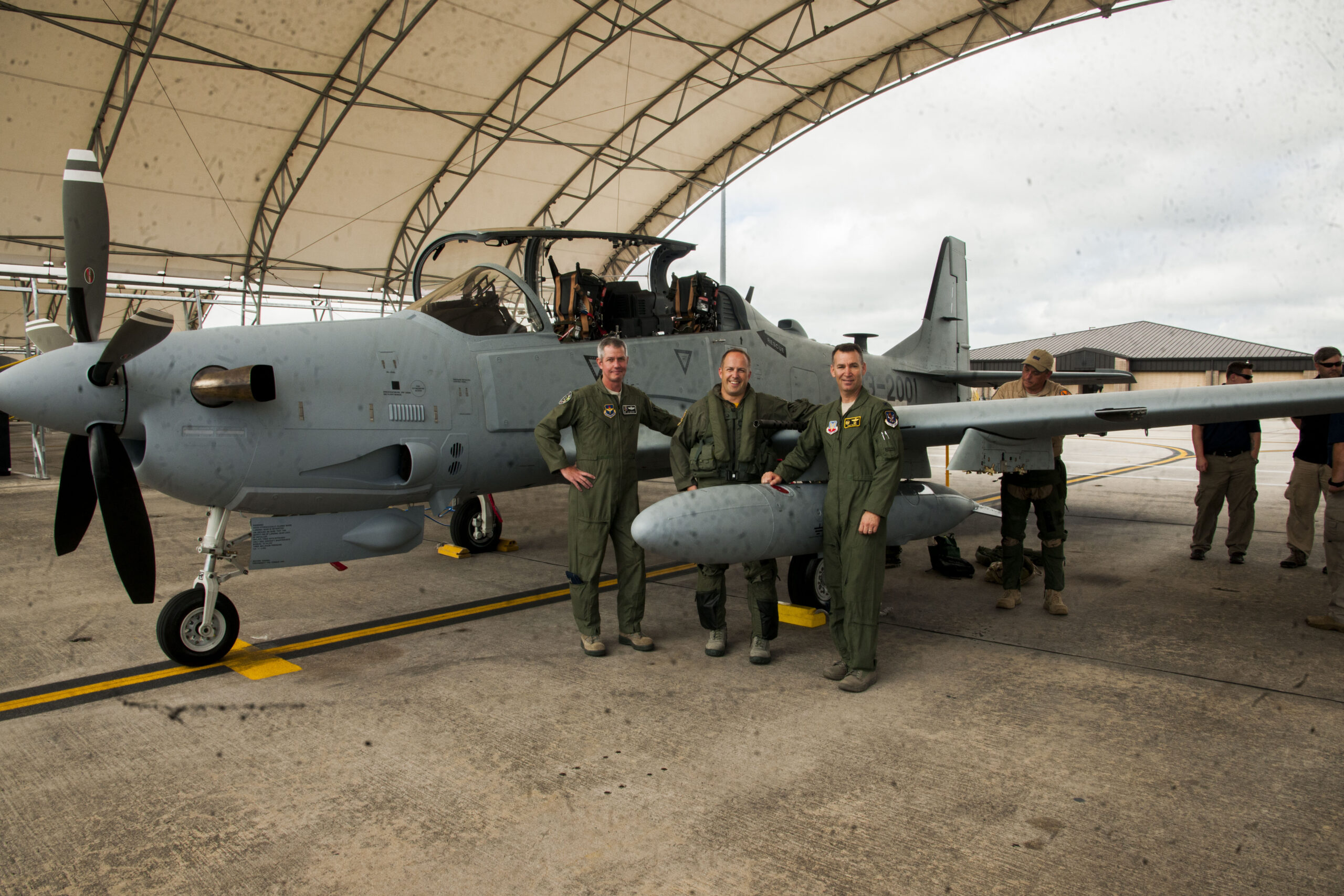
At the same time, U.S. Special Operations Command was also running its own experiments with similar aircraft types, primarily through Imminent Fury, but also other light attack aircraft efforts. As well as testing A-29s, USSOCOM deployed a pair of OV-10G+ Bronco aircraft to Iraq in 2015 for the Combat Dragon II trials.

A decade after these first light attack experiments began, the Department of Defense was still engaged in gathering data on light attack and intelligence, surveillance, and reconnaissance (ISR) aircraft under the Capability Assessment of Non-Developmental Light Attack Platforms or Combat Dragon III, which began in 2017.
Latterly, there was the Air Force’s Light Attack Aircraft (LAA) program, the immediate precursor to the current Light Attack Experiment.
You can read more about the saga of the LAA program here, but suffice to say, when it was launched in 2018, the A-29 and AT-6 — both single-engine turboprop aircraft — were expected to be the only aircraft that would meet its requirements. The A-29 and what was then known as the AT-6C had already taken part in two rounds of experiments between 2017 and 2018, together with Textron’s Scorpion light jet and the AT-802L Longsword armed crop-duster from Air Tractor and L3.
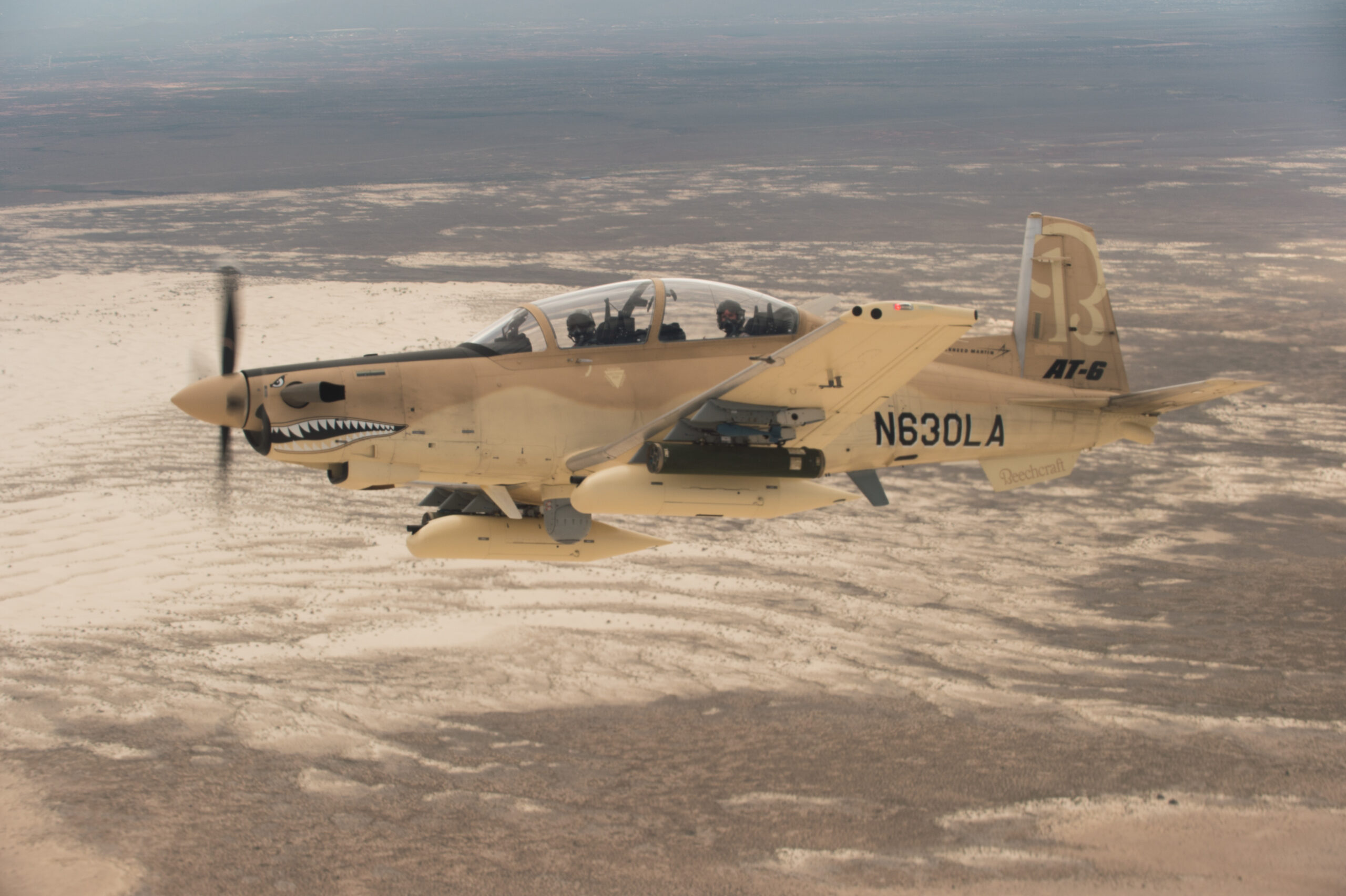
But in early 2019, LAA became the latest Air Force light attack aircraft effort to be deferred indefinitely. The then Air Force Chief of Staff Gen. David Goldfein bemoaned a lack of data on how these aircraft would be used, especially with other platforms, uncertainty over funding, as well as a lack of interest from potential foreign partners.
Ultimately, LAA was abandoned and with it went the hopes of fielding a fleet of as many as 359 aircraft, enough for eight operational squadrons and three training units, as the Pentagon had at one time planned. As it was, the projected buy was repeatedly trimmed back, down to a fleet of less than 100 aircraft and then as few as 20.
In the meantime, the requirement for a light attack aircraft of this type became less pressing, with the wind-down of large-scale air operations in Afghanistan and the Middle East.
“We’re going to broaden the scope a little bit,” said the then Under Secretary of the Air Force, Matt Donovan, suggested of LAA, speaking in early 2019, but by this stage it seemed there was no real way back for a large-scale light attack aircraft acquisition program.

Rather than broadening its scope, therefore, the Air Force ended up buying just five of the two turboprop types once LAA had been reworked as the Light Attack Experiment, with initial contracts being announced in March 2020.
In the background, however, AFSOC was following a different path to introduce a light attack and ISR aircraft suitable for missions in uncontested airspace, with minimal support infrastructure. That program is known as Armed Overwatch, and although Congress blocked a fiscal 2021 request for funds to begin buying the aircraft, more recently it has made significant progress.
Perhaps surprisingly, the A-29 was not among the five contenders for Armed Overwatch, although the AT-6E was. Earlier this month, SOCOM awarded a contract to L3 Harris Technologies for its AT-802U Sky Warden, based on an agricultural aircraft.
The contract has a cost ceiling of $3 billion and could eventually include delivery of up to 75 AT-802U aircraft.

That decision, which you can read more about here, was the latest twist in a long-running story that has, so far, seen multiple efforts to buy light attack aircraft for the U.S. military falter. Should the Armed Overwatch program meet its aim of achieving full operating capability should in 2029, it can be said that the light attack story has properly turned a corner.
Before that happens, however, it seems the Air Force will continue with its efforts to offload its A-29s and AT-6Es to foreign nations that already operate the types. There is no shortage of existing Super Tucano operators who may take up the offer, although the AT-6E has found a much smaller market so far, with only Thailand having ordered this light attack version of the popular T-6 trainer.
During 15 years of efforts to field a light attack aircraft, the Air Force worked its fast jet and bomber fleets hard, including in combat theaters, where aircraft like the A-29 or AT-6 could have taken on many important missions. They would have been able to fly these at a tiny fraction of the cost of a fast jet and be able to operate from forward bases, without the need for aerial tanking, and with a modest logistics footprint. Instead, while light attack was debated seemingly endlessly, the Air Force was literally flying the wings off its legacy combat fleet and the service is now paying the price.
Despite high hopes through its initial iterations, it looks as if the Light Attack Experiment could be destined to become little more than a footnote in Air Force history.
It will be left to SOCOM and its Sky Warden to carry the torch for the light attack concept, as far as the U.S. military goes.
Contact the author: thomas@thedrive.com
